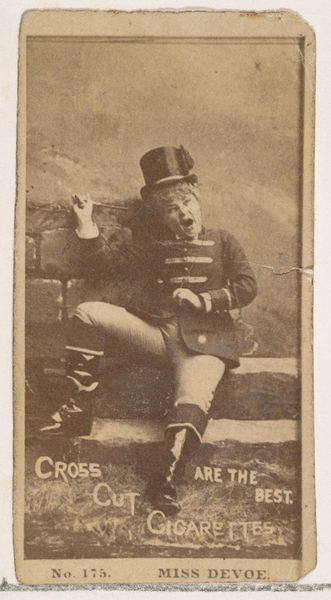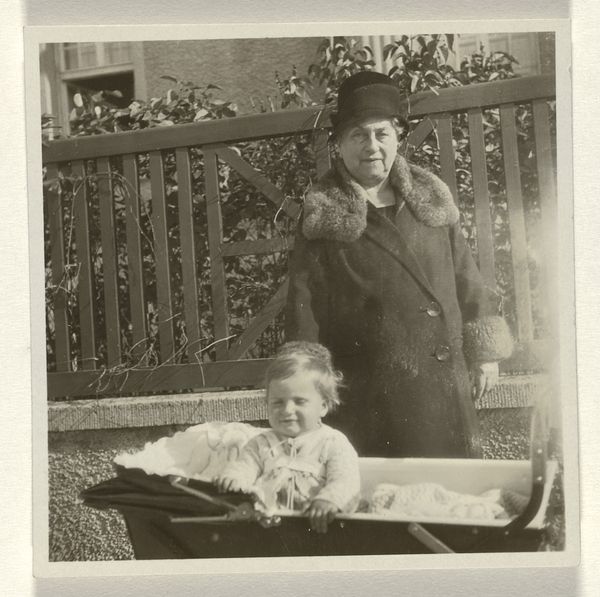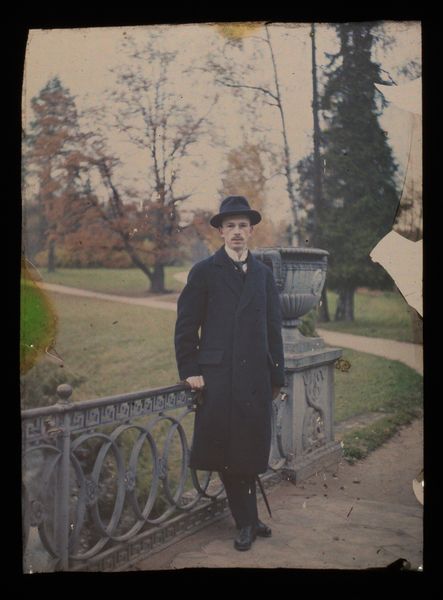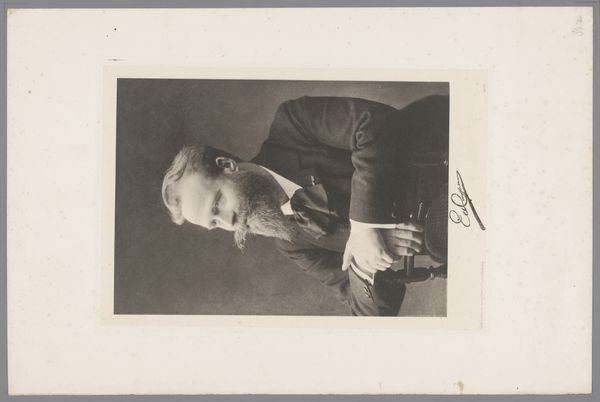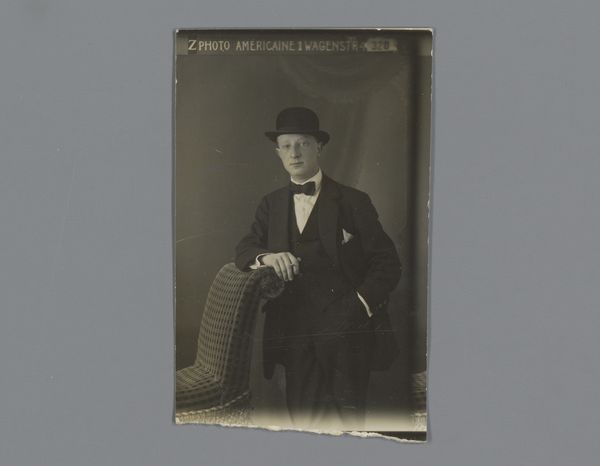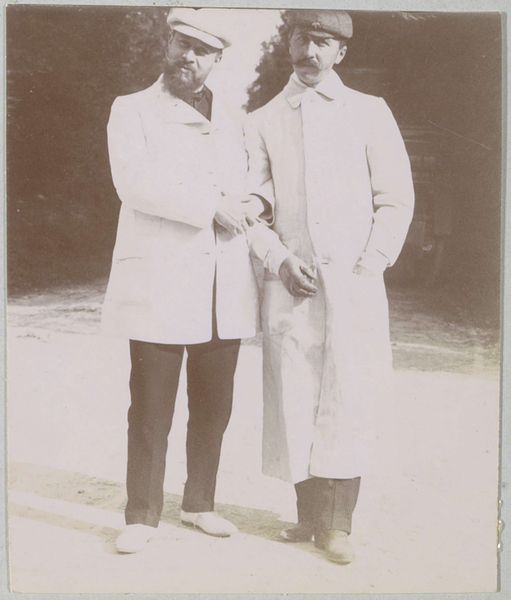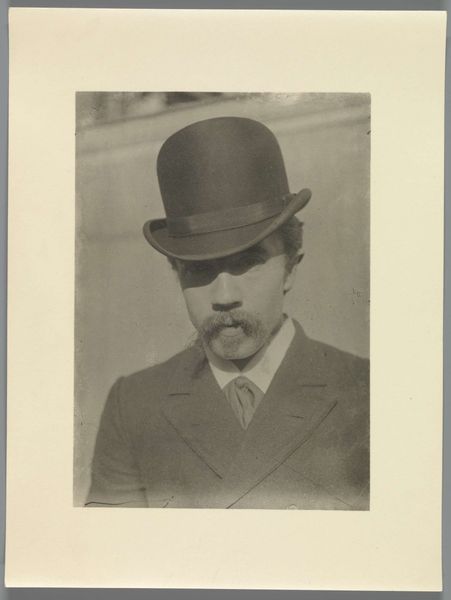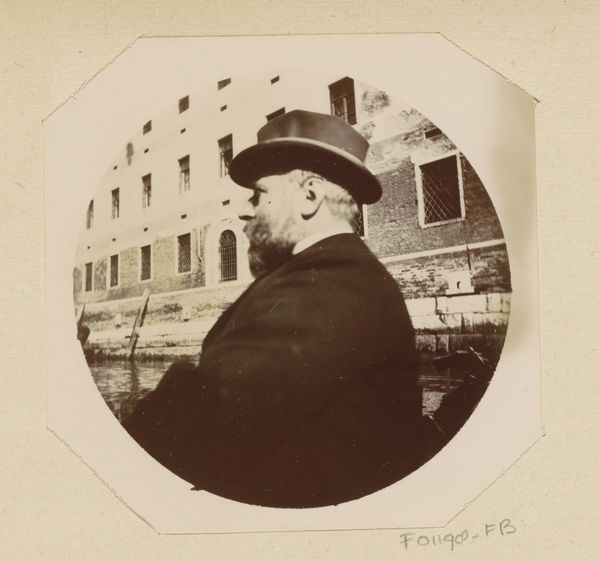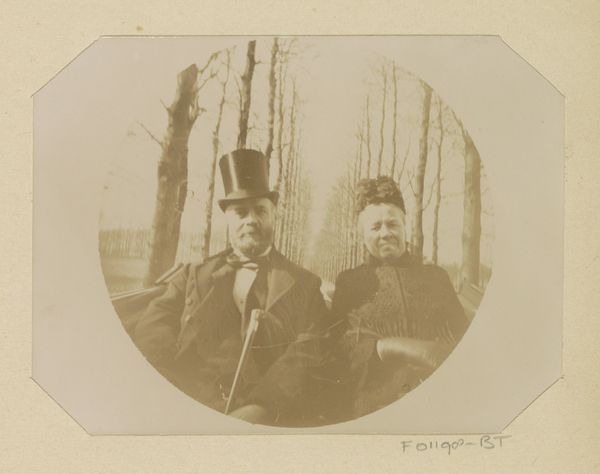
Portret van een man met een peuter op de arm, vermoedelijk in Frankrijk 1903
0:00
0:00
photography
#
portrait
#
photography
#
group-portraits
#
portrait art
#
modernism
#
realism
Dimensions: height 70 mm, width 70 mm
Copyright: Rijks Museum: Open Domain
Editor: This is "Portret van een man met een peuter op de arm, vermoedelijk in Frankrijk," a photograph from 1903 housed in the Rijksmuseum. What strikes me is the intimate, yet formal setting. The sepia tones lend it an old-world charm. What stands out to you when you examine this piece? Curator: It’s fascinating to consider the chemical processes that enabled the creation of this photographic image in 1903. Sepia toning itself was a material choice, both aesthetic and practical – it improved archival stability. What do you think the act of creating this image might tell us about the social status of the subjects and the photographer? Editor: It makes you think about access to the means of image production, right? Was photography common? Was commissioning such a portrait costly, labor intensive? It definitely wasn’t democratized the way image-making is today. Curator: Precisely. Consider also the sitter's clothing, his bowler hat. And consider the baby's christening gown or bonnet, that suggests a certain level of craft and access to materials. Each element of material culture speaks to a specific social reality. What does it tell us about the consumption of photographic portraits at that time? Editor: Good question. These studio portraits were precious objects for families. Photography provided a new method of memorializing loved ones. People began to build extensive family photo albums that were prominently displayed in their homes. It was more about marking one's place in society through visual representation. I had not thought of the impact of display on constructing family narrative. Curator: So how might this particular photographic process and the materials involved influence our understanding of early 20th-century French society, beyond just a simple family portrait? Editor: Examining the material realities and photographic methods offers rich insights into the labor and socioeconomic contexts embedded within the image. That gives me so much to consider! Curator: Exactly. It prompts us to question whose stories are being told and how, and whose are absent.
Comments
No comments
Be the first to comment and join the conversation on the ultimate creative platform.




